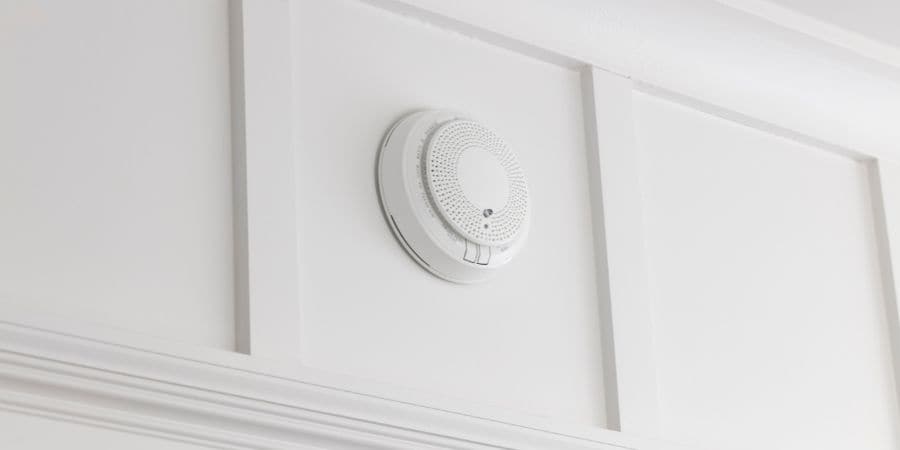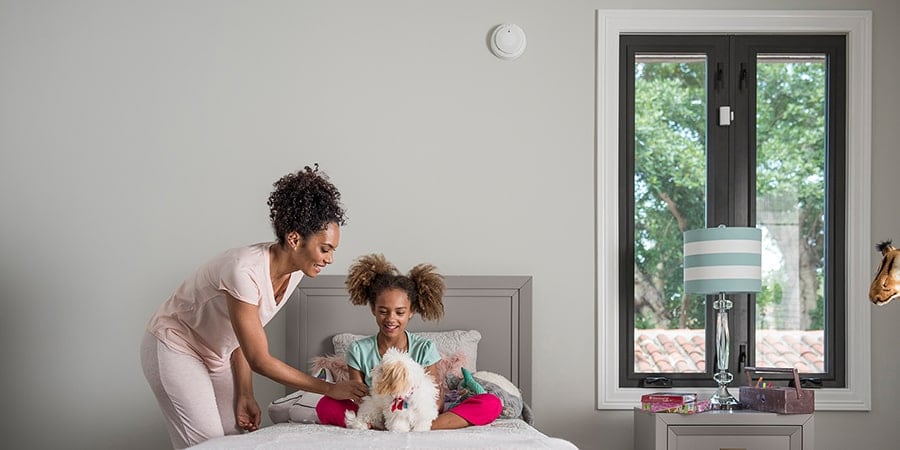Imagine this: you and your family are at home, enjoying a rainy Saturday inside watching some old home videos. You’re all relaxed, it’s been a long week, and it feels so comfortable to snuggle up together on the couch.
But something feels off. As you relax, you feel too relaxed.
You feel weak. Dizzy. And suddenly, one of your kids starts to have difficulty breathing.
Before you know it, you’re at the hospital. It turns out that, in your home, there’s one of the sources of carbon monoxide. And you and your family have experienced mild carbon monoxide poisoning.
When you own your own home, one of the scariest things is the danger of carbon monoxide poisoning.
It’s even scarier if you don’t know what sources of it are in the home or what signs to look for in the case of carbon monoxide poisoning.
That’s why we’ve put together this article. In it, you’ll learn everything you need to about carbon monoxide sources in the home. Finally, you and your family can feel safe. Read on to learn more.


Sources of Carbon Monoxide in the Home
To understand how to best protect your family from carbon monoxide poisoning, you need to know what the carbon monoxide sources in the home are. Basically, any device or appliance in your home that uses gas can end up releasing carbon monoxide.
What Gives off Carbon Monoxide in the Home?
Some of the most common sources of carbon monoxide include furnaces, gas stovetops, fireplaces, generators, vehicle exhaust, and grills. If you have any of these sources of carbon monoxide, then you need to be prepared.
1. Furnaces
If you have a furnace that burns coal, oil, or gas to warm up your home or heat up your water, it could easily emit carbon monoxide if it isn’t working properly. This risk is especially high during the winter when you might overpower the furnace and break it.
To ensure this doesn’t happen with your furnace, it’s smart to have a professional come in every year (before the coldest temperature hits) to inspect and maintain it.
2. Gas Stovetops
One of the most common sources of CO gas in a home is a gas stove. If you have a range top, burner, or oven that’s dirty or not working properly, it could easily start leaking gas.
You also might make the mistake of leaving the gas on without the flame on.
Make sure that your oven is always well-ventilated. Additionally, after cooking and before going to bed, make sure to check that you haven’t accidentally left your gas stovetop on.
If you have children, it’s also a good idea to child-proof your stove.
3. Fireplaces
Gas fireplaces produce carbon monoxide because they run on gas. As for wood fireplaces, they are natural sources of carbon monoxide. To protect yourself and your family, remember to always open the flue before lighting the fire.
Additionally, have a professional come in to inspect and clean it every year, ideally before winter.
4. Generators
If you have a generator, it’s great for an emergency, like if your power goes out during a snowstorm and you need to stay warm and cozy. However, one of the problems with generators is they produce high levels of carbon monoxide.
To keep you and your family safe, you need to place the generator at least 25 feet away from the house.
Additionally, keep the generator outside and downwind from doors and windows that are open.
5. Vehicle Exhaust
Another common source of carbon monoxide leaks in the home is vehicle exhaust. It’s produced by your car when the fuel combustion process occurs. For this reason, you should always run your car outside or with the garage door open.
You may feel safe if there’s a door between your home and the garage, but you aren’t.
6. Grills
Grills can also easily produce carbon monoxide. Everyone loves a burger or hot dog in the summer, so we aren’t telling you to stop grilling. Just make sure that you always do it outside. It may be tempting to do it in your garage when it’s raining but don’t.
You can always close the grill if it’s raining heavily or put a large golf umbrella above it.
Know the Symptoms of CO Poisoning
Considering the dangers of carbon monoxide poisoning, such as permanent brain damage, miscarriage, and death, it’s important to know what the symptoms of CO poisoning are. That way, if you’re experiencing them, you can stop the leak and go to the hospital.
Considering that it’s nearly impossible to detect the carbon monoxide level on your own, you need to know what these signs are. Even if you report it and end up not having poisoning, it’s better to be safe than sorry.
The symptoms of carbon monoxide poisoning include:
Shortness of breath
Headache
Extreme emotions swings
Personality changes
Emotional behavior that’s unusual
Additional symptoms include malaise (feeling generally sick), fatigue, dizziness, vision problems, clumsiness, difficulty walking, impaired or confused judgment, vomiting and nausea, chest pain, rapid breathing, and an irregular or rapid heartbeat.
Additional Symptoms of Carbon Monoxide in the Home
If you don’t notice these signs, or notice them and don’t do anything, then the symptoms get even worse. You could enter a coma, have a seizure, lose consciousness, or die. You can die after only a few minutes of higher concentrations of exposure.
But you can also die from carbon monoxide poisoning if you’ve been exposed to low levels for an hour or so.
If there are very low levels of CO in your home, so low that they’re unnoticeable, you could be exposed to them for weeks or even months. When this happens, you have low-level, long-term carbon monoxide poisoning.
Symptoms of this type of CO poisoning include vomiting, nausea, malaise (feeling generally sick), and headaches. You might think you have low-level flu that just won’t go away.
Additional symptoms you might experience with long-term exposure include impaired concentration and memory, sleep disturbances, unexplained vision problems, and numbness.
Protecting Your Family From CO Poisoning
Because carbon monoxide detection can be so difficult to do, but the risks are so high, it’s important to use all the right strategies to protect your family from carbon monoxide exposure. To do this, you should install and maintain CO alarms in your home and more.
Install and Maintain CO Alarms in Your Home
The first thing you should do is install and maintain CO alarms in your home. This is the most important way of implementing safety at home since an alarm installation will guarantee that you’ll know about even the lowest CO levels.
Once you’ve installed your CO alarm, remember to maintain it regularly. If it isn’t working properly you could end up with a false sense of security and ignore signs of carbon monoxide poisoning.
Properly Vent and Maintain Fuel Burning Appliances
Another strategy for protecting your family includes properly venting and maintaining fuel-burning appliances. Having a fan over your oven and making sure you have a way of releasing gas created by other appliances will ensure it leaves your home safely.
Additionally, you should maintain all of your fuel-burning appliances. When they’re broken, they can easily cause a carbon monoxide leak.
They might also not switch off properly. By maintaining them regularly, you won’t end up with these gas leaks.
Have Your Heating System, Water Heater, and Any Other Gas, Oil, or Coal-Burning Appliances Serviced by a Qualified Technician Every Year
If you have a heating system or water heater that runs on gas, you should have a qualified technician come by each year to check that it’s working properly. If it’s close to breaking, it could give off gas when you’re using it in the wintertime.
You should do the same for any other gas, oil, or coal-burning appliance you have in your home. Generally, we recommend doing this in October or November before the temperature significantly drops.
Have Your Chimney Checked or Cleaned Every Year
Additionally, you should have your chimney checked or cleaned every year. This is for two reasons. First of all, your chimney creates CO when you’re using it, so you need to ensure it can leave your home instead of pushing the CO into it.
Also, if there’s a gas leak in your home, it can more easily leave through your chimney if it’s working properly and clean.
Never Use a Generator Indoors
It can be tempting to use your generator indoors. After all, if you’re using it in the middle of the winter or during an unexpected cold snap, the last thing you want to do is to have to go outside to adjust it or turn it on.
However, generators produce a huge amount of carbon monoxide. For this reason, you should never use it indoors.


Frequently Asked Questions About the Common Carbon Monoxide Sources in the Home
Now that you know quite a bit about carbon monoxide sources, symptoms, and how to protect your family from carbon monoxide poisoning, you might have additional questions. For this reason, we’ve put together these FAQs with answers.
How Can I Avoid CO Poisoning From My Car or Truck?
Don’t run your car inside the garage. Even though many people do this in the winter to warm up their car before they step outside, it’s way too dangerous. It’s dangerous for you in the garage and for the rest of your home if it’s an attached garage.
Instead, you’ll have to brave the cold, drive the car out of your garage, and warm it up out there. Simply pull out a few minutes earlier so it has time to warm up.
How Do You Find the Source of Carbon Monoxide?
The best way to find the source of carbon monoxide is by using a co detector. If you have a high-tech detector or several installed throughout your home, you should be able to get a general idea of where the carbon monoxide emission is coming from.
However, it’s best to leave your home as soon as the alarm goes off. This is safer for you. Professionals can find the source for you, after which you can make the necessary repairs.
Does Opening Windows Help With Carbon Monoxide?
Opening windows helps the carbon monoxide quickly leave your home (as does opening doors). However, don’t leave your exit path when getting out during this emergency to open as many windows as you can.
Only open those that are along the way as you leave your home safely.
What Are Acceptable Carbon Monoxide Levels?
The average carbon monoxide level in your home should be between 0.5 and 5 parts per million, or ppm. Near your stove, the level should be between 5 to 15 ppm. If levels are higher than this, you should exit your home and have a professional check the levels.
Need More Information about ADT Life Safety Devices?
Now that you know about the sources of carbon monoxide in the home, what the symptoms are, and more, you might need more information. Maybe you want to learn about home improvement strategies to protect your home from CO poisoning.
Or maybe you’re looking for a carbon monoxide detector. In this case, you should go with the ADT carbon monoxide detector, a smart device that will detect CO levels intelligently.
To learn more about the ADT carbon monoxide detector, check out details about buying and installing it here.
Related Articles:


